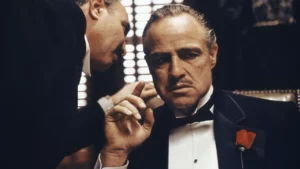Blade Runner 2049 is the visual masterpiece for the last decade. I have always been a proponent of this movie, whether it is in terms of storytelling or awe-inspiring cinematography and visual effects, this sci-fi movie excels in everything that other movies of its scale don’t. Neither does it feel bashful or over the top, nor does it leave you wanting more. Denis Villeneuve strikes the perfect balance between subtlety and high-octane action, and he lets the imagery tell the story.
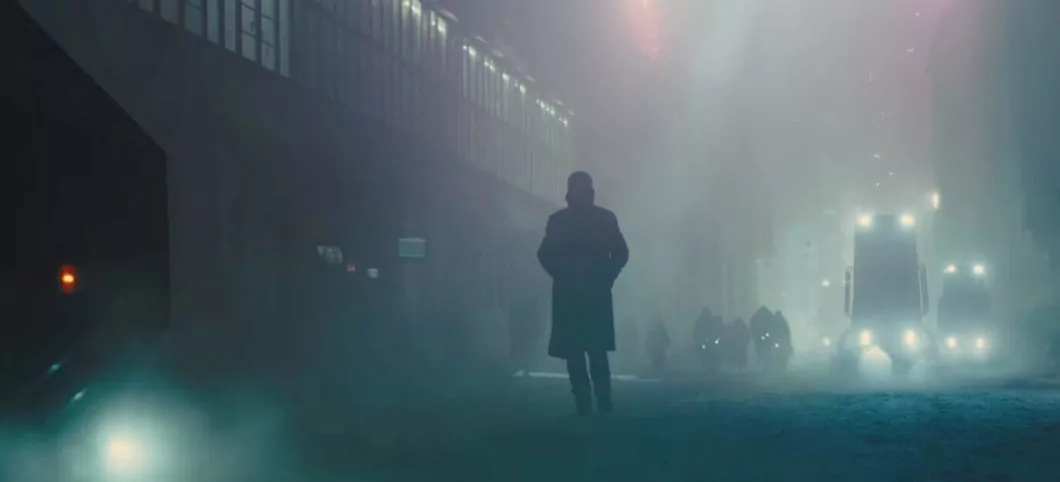
Blade Runner 2049 Movie: The Gritty Atmosphere Which Sets Itself Apart
We have sort of gotten used to Science-Fiction movies baiting us with explosions and neons and none of us really questions whether this formula really allows for the best storytelling. There are movies that do this right and I am not trying to throw shade to any other science fiction which is or isn’t like Blade Runner 2049. But what we miss from these movies is a sense of accomplishment or a reveal which is often clouded in CGI packed climax sequences. Blade Runner 2049 in its truest essence, is a suspense thriller. It is as much about revealing a certain truth as it is about discovering who we really are as humans or replicants disguised as humans. The chaos of Los Angeles is mixed with the empty dark wilderness of lone buildings, haunting sky-scrapers and abandoned cities. The holograms cover these sullen towers, yet where they can’t, one can see nothing but pitch-black darkness. The inside of the city is filled with shady alleys and a unique set of people. The outskirts, however, pose an even darker and lonely vibe with savages roaming in every corner. The eerie beauty of the vast spacious dumping grounds or the expansive solar farms takes your mind away from the neon lights and introduces a new aspect of science-fiction which is more substance than style.
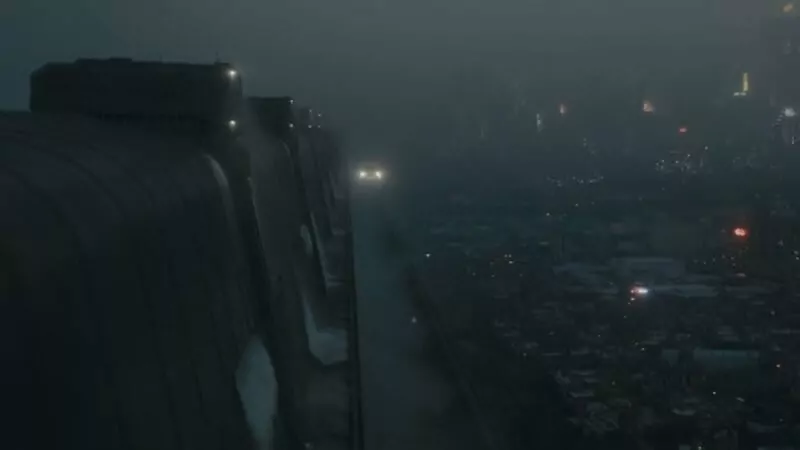
Blade Runner 2049 Movie: Ride through Los Angeles
K’s (Played by Ryan Gosling) shuttle flies through Los Angeles, with synth and horns playing in the background. The chaos is conveyed through the music rather than the imagery which actually presents a completely different view of silence and holograms. The blend of these to opposite aspects of the city form an image which radiates a sense of trying to be something else. The world isn’t the same but each component of this world is trying to replicate an era which is now lost to humanity and conspiracies. It has become so difficult to separate the real from the pretentious that the real become uncertain how authentic they are. Replicants are called out skin-jobs but there’s absolutely no way of knowing whether the person calling them a skin-job is himself a replicant or not. The world is so blurred that boundaries have become non-existent and there’s either silence or sheer entropy, nothing in between.
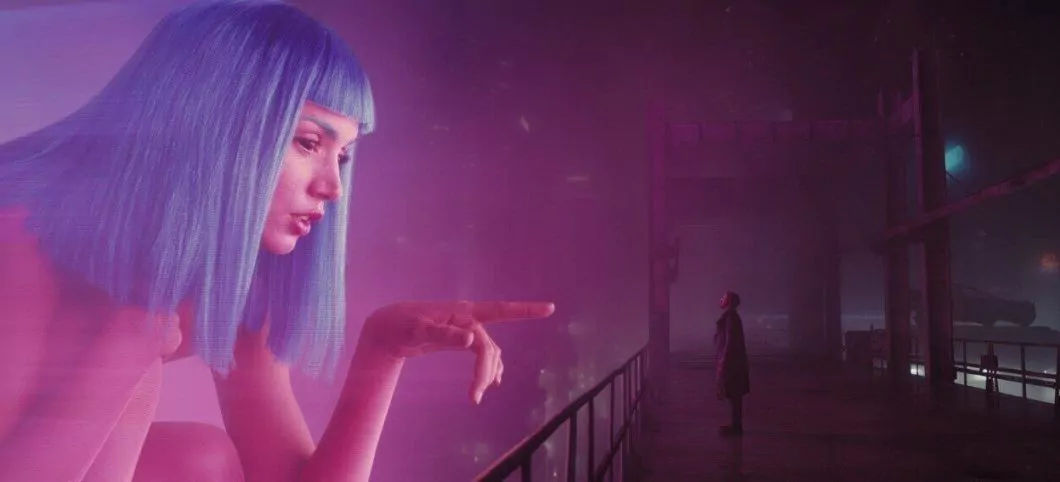
Blade Runner 2049 Movie: Joe and Joi
The fog blurs the neon and the lights turn hazy as K walks through them in Blade Runner 2049. He arrives home to his hologram girlfriend and has his dinner. This relationship between K and Joi is one of the most beautiful and heart-breaking love stories I have ever seen on a screen. Devoid of love and purpose, K turns to Joi (Played by Ana De Armas) for closure and intimacy which he knows he won’t achieve. Yet his subconscious knows no one else to turn to in order to seek this. So, they go on a ride where K breaks and starts questioning everything around him, even Joi. The last speck of love which was left within K after Joi dies, shatters as he sees a hologram of her in the midst of a lonely bridge. “You look like a good Joe”, she says with pure seduction. It is during this scene where K realizes the kind of lie he has been living in. That his name, Joe, wasn’t unique to him breaks the last semblance of hope in him. And at the same time, it gives K his final purpose. Something that sets him on a heroic path even though he has no stakes involved. He does what he does, not for the sake of feeling unique but for the sake of doing something regardless of expecting anything back.
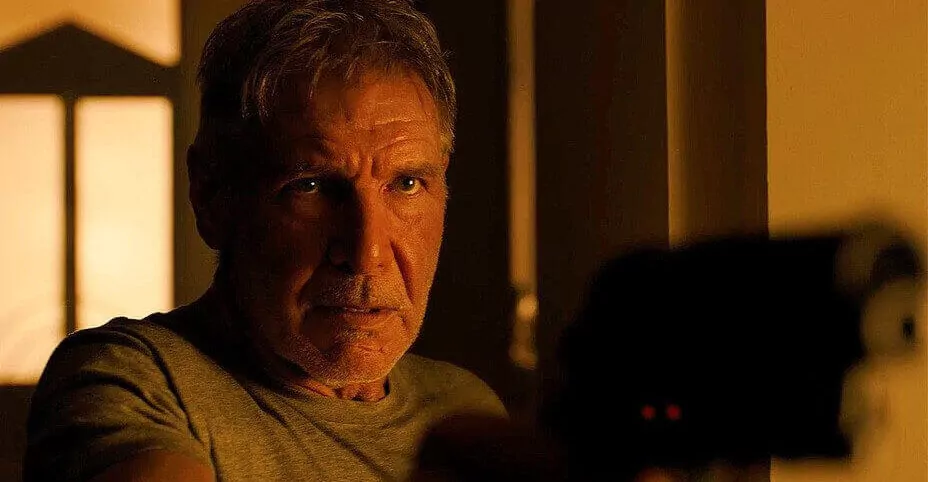
Blade Runner 2049 Movie: A broken Deckard
The desert sequence and when K finally finds Deckard (Played by Harrison Ford) present a completely different tone to the previously dark and saturated theme of Blade Runner 2049. The orange landscape which is laden with radiation and creatures born out of this toxicity. We see the past of Los Angeles, what it used to be before the blackout and before everything turned to dust and darkness. The statues resemble broken monuments, a memory of what once was and an indication of what could have been and what it ended up being. The philosophy of Wallace can be debated, but his strive towards achieving fertility in replicants means that the world again has a chance to be organic and analog, devoid of modern science and engineering. K moves to the casino, calculative and steady and tests the ground for traps. The orange hue is still prominent inside the casino and there’s no internal lighting to separate the two atmospheres. Deckard emerges from the shadow, looking like he has been in an accident for the past 30 years. He has grown wary of strangers and lives here while sacrificing his child who is present somewhere in the city.
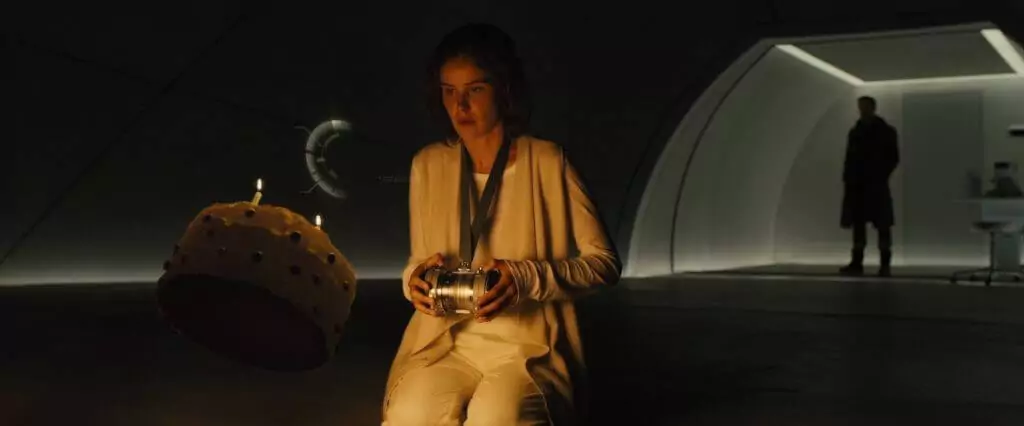
Blade Runner 2049 Movie: The core memories
The memories of K which started all of this, makes him go to the one place where he knows these memories are constructed. The woman over there constructs a birthday memory and from choosing the type of cake to the type of expressions on the children, she is responsible for every humanity that the replicants feel in their lives. These memories of K where he is caught in the factory, with a wooden horse, he knows that they have come out of this place. But the element of shock and realization when he discovers that these memories are in fact real, dismembers him mentally and physically. The woman standing in front of him is filled with tears, without ever having specified who these memories belong to in reality. A job of a memory maker is inspired and depends on the past, what he or she has been through. So it’s natural that her memories are somehow going to be linked with what she has already experienced. I saw her arc as an attempt of getting out of confinement and deliberately putting her own memories into a replicant in hopes that one day someone would come back to her. That someone being her father.
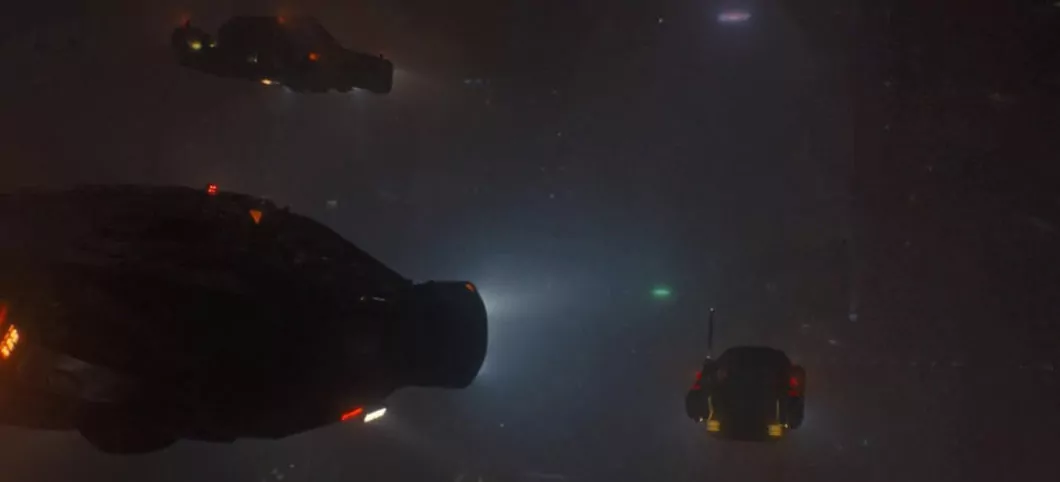
Blade Runner 2049 Movie: The Fire Transition
The fire transition scene of Blade Runner 2049 is a very underrated scene. Well, who am I kidding, the entire movie was underrated. But this scene in specific depicted sheer brilliance, not just in terms of cinematography, but in terms of editing too. A fire is burning aside K, who is all bruised and wounded since his last ambush in the casino. The camera pans towards Mariette (Played by Mackenzie Davis) and then towards the flame which is illuminating the face of K like a blooded corpse, lying there, devoid of all hope and will. The sparks from the orange flames burst into the air and in a matter of seconds, all we see are sparks cluttering the scene. In an instant these sparks take the form of lights sullen skyscrapers and three shuttles fly through the scene, carrying Deckard. This scene utilized the investment of the viewer in Blade Runner 2049. You are so hooked on to the screen watching these flames go up in the air that you don’t even notice how the fire dissolved right in front of your eyes. There isn’t any particular metaphor that I can associate with this scene, but its beauty lied solely in the technicalities and it went on to strengthen my opinion that Blade Runner 2049 is indeed one of the most technically eloquent movies ever made.
The Movie Culture Synopsis
Blade Runner 2049 is an emotional, traumatic and breath-taking piece of cinema which can’t be topped in its visual calibre. Each frame is meticulous and so perfect that coming up with flaws becomes an excruciating task. And, in my opinion, there aren’t any. I could sit all day, coming up with more scenes to talk about and more visual metaphors to appreciate. But somethings are better left unsaid and just felt. Denis Villeneuve’s sheer masterpiece isn’t limited to traditional sci-fi bounds, rather it creates its own set of norms which, I hope, become the new norms in the industry. God, what would I not give to experience Blade Runner 2049 in IMAX again.

